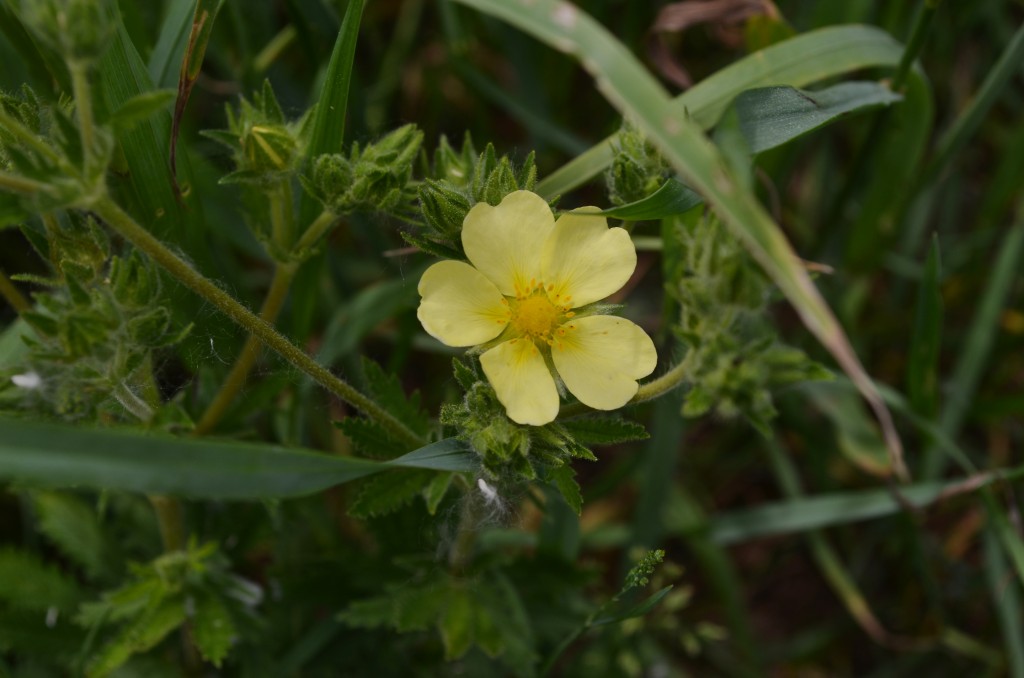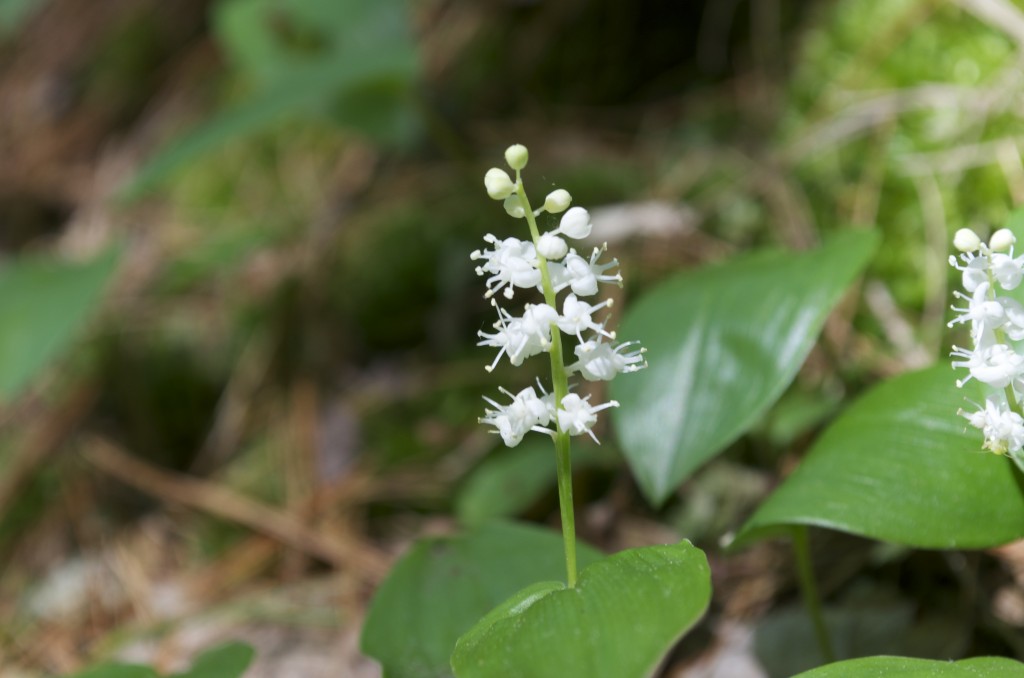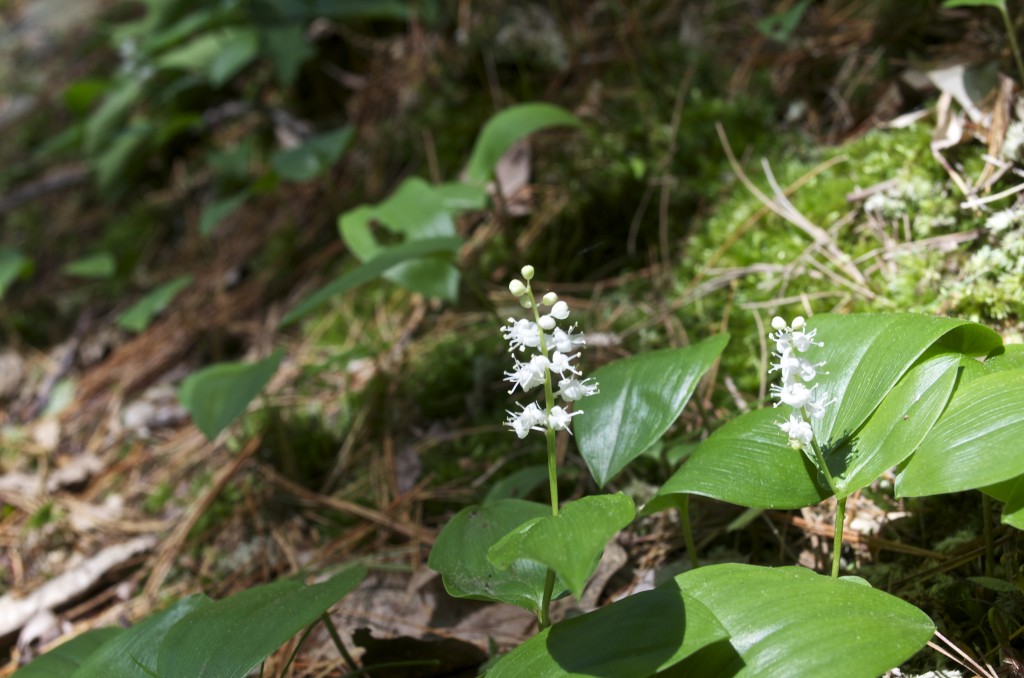Thorny climbing shrub. Can be white or pink. introduced to the eastern U.S. in 1866 as rootstock for ornamental roses. Native to eastern Asia. (Photo June 4.)
Multiflora Rose, Seven-Sisters Rose (Rosa multiflora)

Each flower lives only one day, but each plant produces 20 or more flowers per stem. The sap has a viscous quality and can be stretched between your fingers like a thread of spider silk. The stems, leaves and flowers are edible, raw or added to stew. The flowers can garnish your salad!The Lakota made a blue paint from the flowers and a poultice for insect bites and stings from the crushed leaves.
(The spiderwort genus is named after John Tradescant, who was a gardener for King Charles I of England (1600-1649). His son brought spiderwort seeds or plants from Virginia to England in 1637. It became a popular exotic plant. Native. (Photo June 4.)
Spiderwort, Cow Slobber, Widow’s Tears, Trinity Flower, Indian Paint (Tradescantia virginiana)
This is a dramatic, rare wildflower I admired in the garden of Dr. Wesley Whiteside, and he gave me some! Can grow to 2.5 feet tall. The flowering stalk is leafless and has a single flower, which is a sort of green hood (spathe) and a long spadix extending out like a dragon’s tongue. (In this photo, you can see 3 of the “blossoms.”) Will have berries later in the summer. Closely related to Jack-in-the-Pulpit, but more rare. The foliage is very toxic, so deer leave it alone, but many birds like the berries. (Although something ate all the leaves off the tops of two of mine!)
Also, many wildflowers are noted as preferring disturbed areas —this is the only one about which I’ve read “the presence of this species is an indication that the original woodland flora is still intact.” (illinoiswildflowers.com) Native perennial. (Photo taken June 5.)
Green Dragon (Arisaema dracontium)
 Another cinquefoil, but distinctive because the blossoms are paler and larger than the others. Also it’s the tallest (1 to 2 feet tall). Heart-shaped petals. 5-7 lance-shaped leaflets on each palmate leaf. Native to Europe and Asia. Rose family. Photo: June 4, 2013.
Another cinquefoil, but distinctive because the blossoms are paler and larger than the others. Also it’s the tallest (1 to 2 feet tall). Heart-shaped petals. 5-7 lance-shaped leaflets on each palmate leaf. Native to Europe and Asia. Rose family. Photo: June 4, 2013.
Rough-fruited Cinquefoil, Sulfur Cinquefoil (Potentilla recta)
Okay, this cinquefoil is similar to the previous one, but each leaf has three leaflets instead of five. Also it’s non-trailing and has a fuller fancier flower with green calyx lobes showing between the petals. What makes it “rough”? Perhaps the hairy stems. Rose family. Photo: May 28, 2013.
Rough Cinquefoil (Potentilla norvegica)
Maybe we should do a comparison of all the little yellow flowers out there, to help keep them straight! They’re all different! This is a trailing vine, kind of like a wild strawberry plant. It has compound leaves with 5 toothed leaflets — cinquefoil is an anglicized version of cinq feuilles (French for five leaves). It has 5 petals on the blossom. The blossom grows on a long stalk from the axil. Rose family. Photo: May 27, 2013.
Common Cinquefoil (Potentilla simplex)
In the ginseng family, which explains why the bloom looks so much like dwarf ginseng, but with three umbels at the top of the stalk, and leaves that tend to grow umbrella-like over the flowers. Will have purple-black berries, which are edible and a little sweet. This is not “true” Sarsaparilla. 1-2 feet tall. Native.
Wild Sarsaparilla (Aralia nudicaulis)
Native. Likes bogs and other moist habitats. The leafy parts are sterile; the cinnamony part is a fertile, spore-bearing frond. This kind of fern is considered a living fossil because it occurs in the geologic record 75 million years ago, among the oldest of ferns.
Cinnmon Fern (Osmundastrum cinnamomeum)

 These are the plants whose leaves carpet the woods, just little leaves standing vertically out of the ground. The flowers are fragrant. During the summer the flowers are replaced by small speckled red berries. Lily family. Native perennial.
These are the plants whose leaves carpet the woods, just little leaves standing vertically out of the ground. The flowers are fragrant. During the summer the flowers are replaced by small speckled red berries. Lily family. Native perennial.
Canada Mayflower, Two-leaved Solomonseal (Maianthemum canadense)
Okay, locally we have at least three kinds of vetch to keep straight. This is cow vetch, and the other two are common vetch (which is magenta and looks like a sweet pea) and crown vetch (pale pink and shaped like a crown). This is similar to a pea in habit, with tendrils that fasten on to (and can strangle) other plants. Widely used as forage for cattle. Pea family. Origin: Eurasia.
Cow Vetch, Tufted Vetch, Bird Vetch, Boreal Vetch (Vicia cracca)